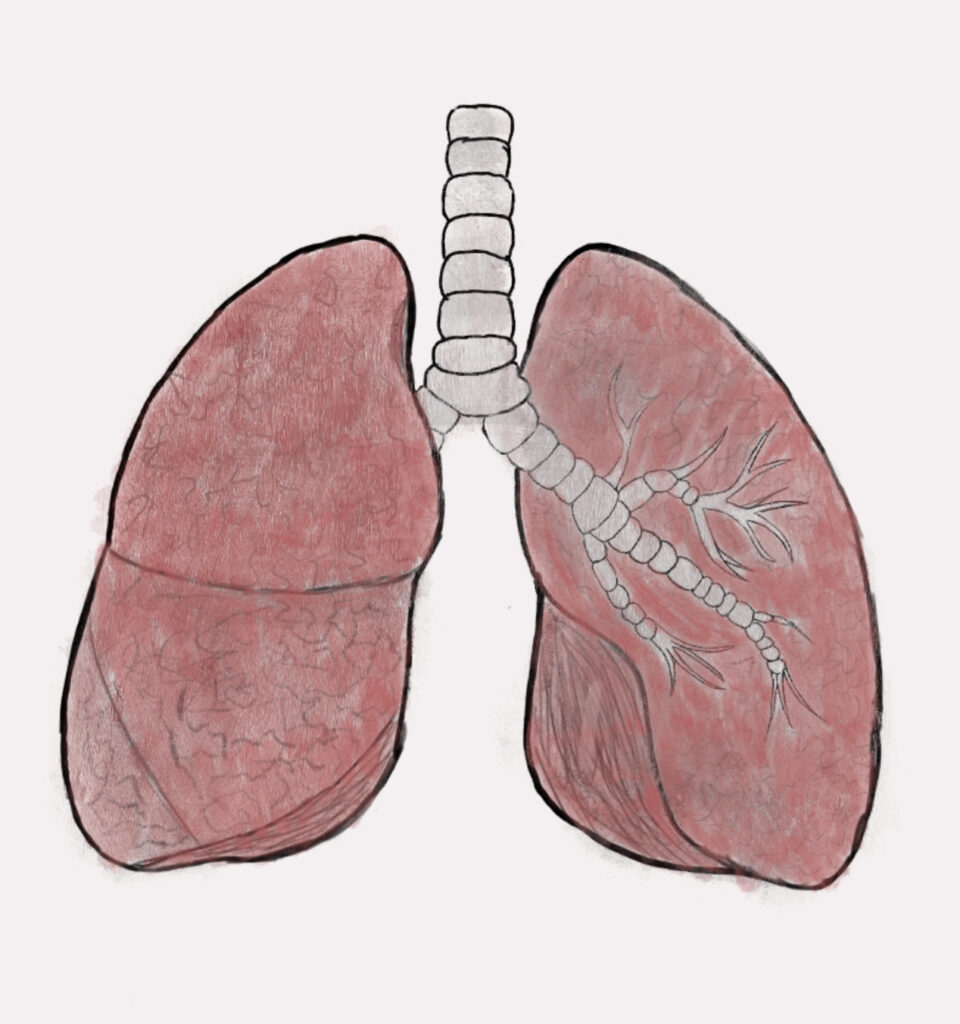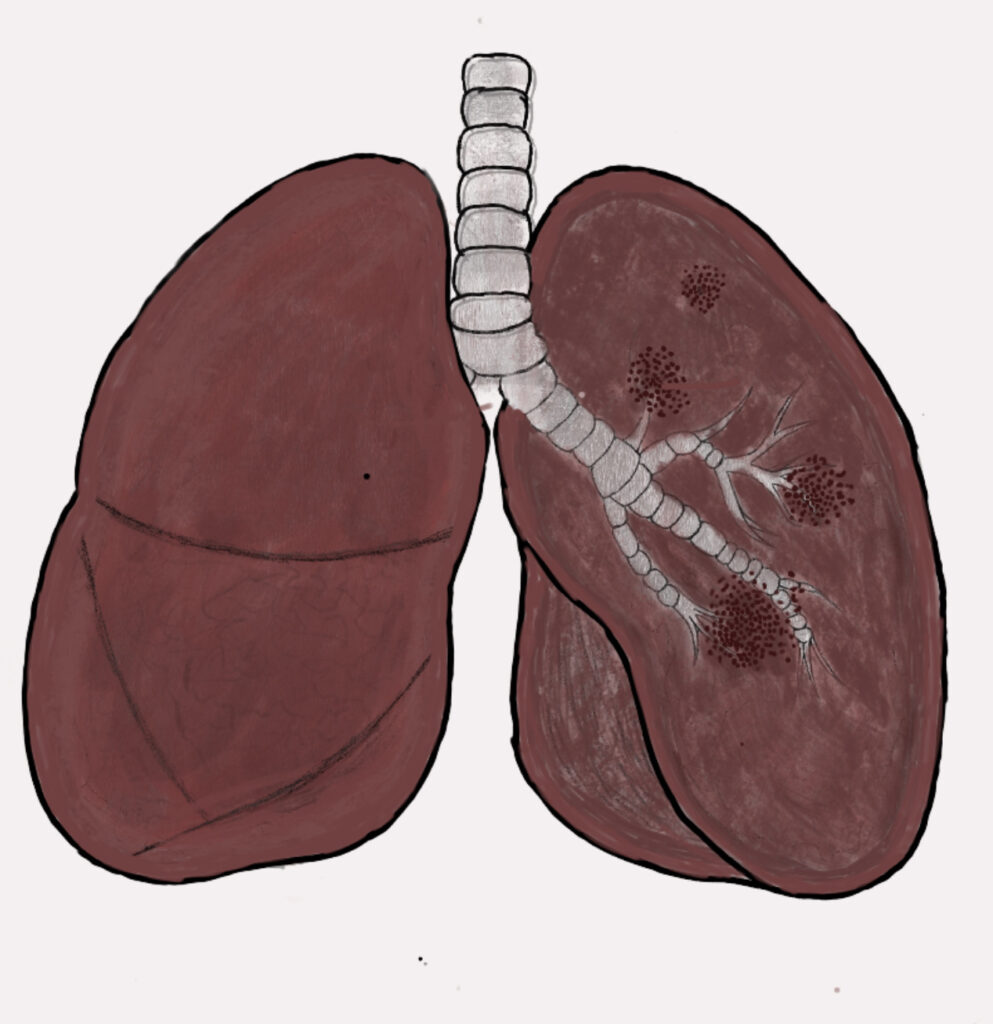My STEAM project is about the lungs. The project was originally supposed to be an animation showing the growth of the cancer. The animation would have included showing the lungs inhaling and exhaling. This type of lung cancer is small cell lung cancer (SCLC). This is most common in people who have a history of tobacco use. Treatments that are most common in people who haver cancer is chemotherapy and radiation therapy, or a combination of the 2. These treatments cure, shrink, or stop the progression of cancer.


Unhealthy lung, during lung cancer
(Animation could not be uploaded)

This piece illustrates an in-depth understanding of the objective: analyze the effects of disease on the function and structure of the respiratory system by illustrating the growth of lung cancer through a visual medium. The particular type of lung cancer illustrated in this project is small cell lung cancer (SCLC). Small cell lung cancer is characterized by small oval-shaped cancer cells that form in the bronchi tubes of the lungs and later metastasize to other areas of the body. Small cell lung cancer usually manifests as a result of tobacco use or smoking. People who have small cell cancer can experience symptoms of shortness of breath, coughing, chest pain, and bloody phlegm. Treatments for small cell lung cancer include chemotherapy, radiation, or a combination of both treatments. In theory, these treatments, or a combination of the two, stop the tumor from growing and ideally shrink the tumor altogether. Side effects of these treatments include edema, fatigue, diarrhea, delirium, appetite loss, hair loss, nausea, and bleeding/bruising. Originally, this piece was an animation that digitally illustrated the progression of small cell lung cancer and its effect on the lungs as the lungs inhale and exhale. However, due to complications, these drawings were created in place of the animation. These drawings illustrate both a healthy, cancer-free lung and an unhealthy, cancerous lung. In the cancerous lung, it can be observed that there are small, oval-shaped formations of cells at the ends of the bronchioles. These formations are in fact the tumors that result from small cell lung cancer.